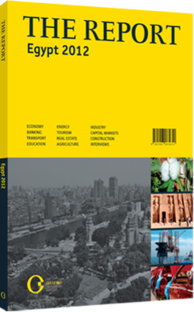From the roots up: Microinsurance could significantly increase penetration rates
The sector was in a significant transitional phase in mid-2012, with overhauls to the national pension and health plans proposed but not in place. With insurers expecting a resumption of legislative progress later in the year, the focus could return to what can be done to boost the insurance penetration rate. With microinsurance on the rise worldwide, tweaking the legal framework to encourage it could be a part of the solution.
CURRENT SIZE: Measuring the current size of the microinsurance market is difficult – statistics in Egypt generally lump all microfinance products together, and the lack of transparency means statistics can be unreliable. According to the Egyptian Financial Supervisory Authority (EFSA), the financial services regulator, there were 1.5m microfinance users as of December 2009, with a total portfolio of about $5.2m in products – either loans, savings schemes or insurance. Of that customer total, 71% were traders, 20% working in services and 9% in manufacturing. In another estimate from a 2011 report from Planet Finance, a non-profit microfinance organisation, around 1.32m Egyptians had signed up for a microfinance product.
Regardless of the size of the current market, the potential market is far larger. Planet Finance’s estimate is that 95% of demand has gone unmet. Worldwide, according to a study by the reinsurer Munich Re, 78m people had bought a microinsurance policy as of 2006, and by 2011 the total had ballooned to about 500m.
POTENTIAL: Microinsurance remains at the earliest stages of development in Egypt: pilot programmes are in place to gauge market potential. Planet Finance is working with German insurer Allianz, for example, on a product to cover death and disability for about 30,000 people. Others include the Aga Khan Agency for Microfinance and the Alexandria Business Association, both of which market the Allianz product.
Planet Finance’s report included a survey of 350 microentrepreneurs, which indicated a low level of awareness of microinsurance and its benefits. Respondents were also concerned about the reliability of payment of claims and benefits, revealing a lack of trust in the insurance sector, and a perception that these types of products were beyond the financial means of most. However, those surveyed did show an appetite for tools for risk management, and some home-grown financial services are in use in Egypt that have also been deployed elsewhere in informal economies, such as rotating group savings schemes. In these arrangements, group members contribute a set amount on a regular basis, and take turns receiving the collected sum, providing an occasional chunk of capital that would be otherwise hard to come by in low-income settings.
The survey found that in addition to an appetite for savings schemes, the Egyptian market could be ready for death and disability protection, as well as health insurance: microentrepreneurs by and large reported a preference for paying for private sector health care rather than relying on free public services, on expectations of getting higher-quality treatment.
REGULATORY SUPPORT: Although there are no laws to formalise and support microinsurance, EFSA has in the past provided support for developing them, including organising conferences to study the issue in 2008 and 2009. According to a 2010 EFSA report, the next steps should include a country-wide study to identify needs and make policy recommendations. EFSA should also develop a plan to address legal and policy needs, select methods to build public awareness and boost bureaucrats’ technical capacities.
Using microfinance institutions as distribution channels for microinsurance products issued by licensed insurers is a workable and proven model. Like in bancassurance, whereby conventional insurers leverage banks’ direct access to large client bases and often bundle insurance with banking products, microinsurers worldwide are finding success doing the same on a smaller scale. That can mean passive uptake, such as mandating that a life insurance policy is included along with a microcredit loan in order to protect the lender from accidental death, or actively selling to clients.
You have reached the limit of premium articles you can view for free.
Choose from the options below to purchase print or digital editions of our Reports. You can also purchase a website subscription giving you unlimited access to all of our Reports online for 12 months.
If you have already purchased this Report or have a website subscription, please login to continue.

